The content of the article
- 1 Why do blisters appear
- 2 What are the types of corns
- 3 Where do blisters appear most often and why?
- 4 What are calluses dangerous for?
- 5 How to get rid of water corns
- 6 How to get rid of dry corn
- 7 How to get rid of corns
- 8 How to get rid of calluses
- 9 Pharmaceutical remedies for corns
- 10 Removal of corns in the beauty salon
- 11 Is it possible to pierce the corn
- 12 How to wear shoes so that there is no calluses on the legs
- 13 Callus Prevention
- 14 Video: how to instantly remove corns and calluses
Leathery growths on the leg, disgusting in appearance and painful to the touch - this is the notorious corns. Doctors call them "garbage heaps" - there are accumulated dead cells of the dermis, which have suffered from excessive pressure on them. And if in the early stages it is a small problem, then in neglected form it becomes a serious disease.
Why do blisters appear
There may be several reasons for the formation of problematic growths on the leg. Most of them are associated with the wrong shoes.
- Tight puts excessive pressure on leg areas. In the free leg "goes", and as a result of friction a callus is formed.
- Cause of the appearance of callus can also be quite a high heel, which can change the balance point of your body. The pressure on the feet is unevenly redistributed. Corn is formed exactly where the greatest onslaught.
- Cheap material, from which shoes are often sewn, does not allow the foot to "breathe." Feet sweat, irritation appears first, then blisters form.
Friction when walking can cause consequences, not only because of inappropriate shoes. There is a specificity of the structure of the legs, when the bones of the nearby fingers are tightly pressed to each other and constantly rub.
What are the types of corns
Before embarking on the treatment of corns, one should determine not only the reasons for their formation, but also the nature of the growths themselves. Here there is a specific classification.
- Skin corns - this is exactly what was mentioned above.
- Bone corns have a completely different nature of appearance and are formed on the places of accrete fractures due to the regeneration of bone tissue.
Skin corns, in turn, can still be divided into several types:
- Corn is wet, or soft, popularly called dropsy. It is very painful and, in the event of spontaneous strain, is able to become infected. If an autopsy does not occur, the soft callus hardens (keratinous).
- Dry corn (hard) is the new “hypostasis” of dropsy. But it is not so painful anymore, if there are no cracks on it.
- Varieties of dry calluses are corns, which differ from ordinary corns in impressive size. Bell beetles are formed solely on the soles of the feet and are caused by improper footwear.
- If some kind of foundation has appeared inside the dry corn, then this type of growth is called a core corn. And it already speaks about the running stage of the process. On the formation of the rod indicates the hole in the center of the corn. If there is such a sign, you should seek help from a doctor - in this situation, only self-harm can be done by self-medication.
Where do blisters appear most often and why?
Corns can appear not only on the feet - all parts of the body that are subject to friction and prolonged pressure are not insured against the formation of water bodies and dry growths (except corns and corns).
- On the knees, elbows, corns can manifest as a result of physical exertion in the process of performing heavy work.
- The same can be said about the athletes who earn their calluses in these places during training (while more delicate places are lubricated with pre-talcum powder).
- An example of hard corn can be called the old bumps on the ring finger of artists or people who write a lot.
- Dropsy appear on the palms of friction, if you work, for example, with a shovel in your hands without gloves.
- Stitched seams may rub the skin in areas of excessive sweating (in the armpits and groin).
But the heels and toes are, after all, the most vulnerable places, as they experience the most maximum load. And if other parts of the body can somehow be temporarily shielded from pressure and friction, then with the legs the situation is more complicated. Few people will lie in bed for a few days only because a callus has formed on the leg.
What are calluses dangerous for?
Corn - although it is insignificant, but a skin disease. Therefore, it must be treated on time. Moreover, many growths can cause severe pain that impedes walking.
Dropsy can involuntarily be opened, and an infection gets into an open wound, which means that an inflammatory process will occur that may be accompanied by temperature. But not only wet corns can become infected - on dry “gates” for infection, microcracks become, which are not visually noticeable and at first do not cause inconvenience. The more neglected the growth, the more difficult it will be to get rid of inflammation.
Old tenants can slightly deform the foot, leading to another pathology - flatfoot. Especially dangerous is the development of corns in people with diabetes. Their vessels already have a weak ability to recover, and the corpus callosum in this case will develop more difficult. And the formation of infections is completely undesirable, since in violation of immunity, the body is hard to fight even with such a “trifle”.
How to get rid of water corns
Treatment of corns should be carried out based on the degree of their neglect and the type of education. The easiest is with dropsy, because they can be attributed to the category of "fresh".
Immediately you should make a reservation that it is risky to open the calluses yourself - you can carry the infection.But if you are sure that you will do everything right, then strictly adhere to the rules of hygiene.
- The dropsy and the area around it is washed with soap. Hands must also be disinfected.
- Take a sterile needle of a disposable syringe (new, not used previously).
- Open the callus in the place where the skin has moved away from the tissues. The puncture should be small.
- Do not seek to squeeze fluid from under the skin.
- Remove what has drained from dropsy during a puncture with a cotton swab moistened with hydrogen peroxide.
- The same antiseptic (or alcohol) should be treated open corn.
- The skin at the place of dropsy should not be cut off - it will serve as a protective "lid" for the wound.
A sterile dressing is applied to the antiseptic treated area. If the callus was large enough, apply a gauze napkin. When a small wound is enough bactericidal adhesive tape.
You shouldn’t keep “packed” callus long - the skin needs to breathe for quick healing. Therefore, at the time of sleep problem place can be left open. The pain and burning sensation in the area of the blister can be removed by putting a cotton wool soaked in milk (cold) on the corn.
How to get rid of dry corn
It will be more difficult to fight with dry calluses, because The process of hardening fabrics has already begun. The main struggle, therefore, will be precisely the softening of the corn. And the duration of the process depends on the degree of neglect of the problem.
The basic algorithm of the daily procedure is as follows:
- First you need to arrange footsteps hot tub. You can just soap, but it is better to make a toned bath - with the addition of a few drops of tea tree oil into the water. An infusion of herbs (calendula or chamomile) will be useful in this procedure.
- To remove the top keratinous layer of the skin, the steamed corn is gently rubbed with pumice.
- Now it is necessary to apply a moisturizing composition to the problematic skin. It can be pharmaceutical creams with vitamin E or oil (olive, castor). You can apply and folk remedies: It is necessary to prepare an ointment of lard and celandine juice (in equal shares). And this ointment is made from chicken egg (fresh) and a glass of vinegar essence 80%. Having infused the mixture for a week, apply it on steamed corn.
- To enhance the effect, keep the treated foot warm - put a wool sock on the steamed foot.
These recommendations for the disposal of corns did not concern the core view, sincethese formations are recommended to be treated by a specialist. But if the rod is still small, you can try to get rid of it at home.
Preliminary preparation corresponds to the above described - the foot needs to be steamed, rubbed with pumice stone and moistened. And after the cream is fully absorbed into the skin, a patch with a hole in the middle is glued onto it. This is necessary in order to protect the skin around the corn, leaving only access to the rod. Put a little acetic acid into the well. It gradually, after several procedures, “leaves” the rod.
When getting rid of corn, take into account the fact that this procedure is painful and unsafe: there is a risk of damaging healthy areas of the foot and putting an infection in the wound.
How to get rid of corns
Natoptysh is the same dry callus, so you can get rid of it by the method described above. In addition to this, we can recommend a number of other funds.
- Foot baths at the slants will be more effective if apple vinegar is also added to the tea tree oil.
- From time to time hot baths should be replaced with cold ones. In a liter of water, dissolve 1 tbsp of salt of stone and hold the legs for 20 minutes. This will help relieve pain in corns.
- Good help with corns compresses of grated onion. They are put on the night, and in the morning they are washed off with warm water, then natoptysh are smeared with vegetable (or any other) oil.
- Propolis, which should be applied to corns, has a good therapeutic effect on corns. You can make this ointment: 30 g of wax, 50 g of propolis and the juice of 1 lemon is heated on a slow fire, stirring regularly.
- Will help soften the natoptish tablets of aspirin (5 pcs.). Pound them into powder, add 1 tablespoon of lemon juice and water. Apply gruel in the form of applications on the corn, cover with a plastic bag and wrap a warm towel. After 10-15 minutes unwind your foot, rub hard skin with pumice, and then soften with cream.
- It is better to heal the knees with deep cracks with the help of starch broth. You should not boil the whole potatoes - there will be enough peel. Hold for half an hour in this broth sore legs, then rinse with warm water and lubricate with oil (better than castor). Wear natural socks on your feet and leave them until morning.
You can also use for compresses grated apple, tomatoes, gruel of onions (onions), mixed with honey and covered with cabbage leaves.
How to get rid of calluses
Bone calluses have nothing in common with ordinary growths. They have different reasons for education, different structure. Therefore, the methods of treatment will be different.
Since the callus is formed from bone tissue (and not in the layers of the skin), the methods for its removal, applied to ordinary calluses, will not work here. The removal of such formations is performed surgically, and, therefore, self-treatment in this case is completely excluded.
But the operable disposal of calluses is carried out in case they cause inconvenience (and not only cosmetic). The main reasons for which the proposed operation, are: pain, provoked by the corns, or unwanted deformity at the site of a healing fracture.
Pharmaceutical remedies for corns
In addition to home remedies, it is recommended to use special preparations sold in pharmacies to get rid of calluses.
Corn patch is a fairly simple and cheap remedy. But it is suitable only for fresh corns. It is supposed to be used in this way: put on the skin, stand for several hours and take off. It is believed that the corn will come off with a plaster.
It is necessary to process the corn liquid only the growth itself (so as not to damage other skin areas). The procedure takes a little time and has a soothing effect. The usual dry corn will come down in a few tricks.
Salicylic ointment is the most effective of pharmaceuticals. The acid, on the basis of which it was created, is also a part of the corn liquid. She is also impregnated with a tissue flap on a corn plaster.
Even in the pharmacy, you can purchase additional funds to soften the skin in problem areas, as well as to heal microcracks - creams, gels, lotions.
Removal of corns in the beauty salon
With insignificant corn, you can cope at home. But here is a running option, such as a callus is better to remove using surgical intervention in the clinic. But you can contact the beauty salon, where there is specialized equipment.
- One way is to drill the corns. Using various nozzles-drills, the master gradually removes areas of keratinized skin, reaching the core. When the hole becomes deep enough, in it lay the medical preparations possessing anti-inflammatory properties.
- The procedure in which liquid nitrogen is used is called cryptography. This is another way to burn corn.
- The most painless is laser therapy. The beam at the same time not only burns the corn, but immediately heats the blood vessels, preventing bleeding.
All these methods guarantee high-quality removal of formations without negative consequences. Healing is fast, and the risk of infection is reduced to zero.
Is it possible to pierce the corn
Opinions about whether to pierce the corn or not, diverge. But we are talking here about blisters, because dry callus needle to open it makes no sense.
As for wet corns, as mentioned above, the autopsy procedure should be carried out in compliance with all sanitary and hygienic standards. If you are not in favor of piercing dropsy, then you should not do this - you can do without this procedure.
- Treat the skin on the corn with ethyl alcohol, hydrogen peroxide or any other antiseptic.
- Put a bactericidal plaster over the dropsy and hold it there for several hours.
A wet corn will burst by itself, being under such a bandage.Therefore, the patch should be removed carefully so that it does not stretch the skin. Treat the opened wound with peroxide and apply a bandage if you are going to leave the house.
To remove wet corns without opening, you can use anti-sweat. Within 5 days before bedtime, apply it on the blister, put on socks made of cotton thread. Gradually, the corn will come to naught.
How to wear shoes so that there is no calluses on the legs
So, the main culprit of the appearance of feet on the feet of the blisters, corns, corns is shoes. To avoid these unpleasant formations, you need to learn how to properly choose shoes, boots, boots and wear them.
- When you buy new shoes, wear them with new socks. It is better to choose acrylic - their structure "extinguishes" friction.
- If the shoe rubs, change the insoles (perhaps the reason for them).
- To prevent wet calluses from appearing on the heels, it is advisable to place a special pad under the heel of the shoe, which will prevent friction.
- Do not wear shoes on bare feet, even in summer, if there is a predisposition to the appearance of corns and corns. Even afterbirths for men appeared on the market.
- But if, after all, it is more convenient for you to walk without socks and then follow, powder your feet with talcum powder (baby powder).
Callus Prevention
In order to prevent the appearance of corns, in the first place, be more attentive to the choice of shoes.
- Buy only what suits you leg. This can be determined in the following way: there should be a small free space between the toe of the shoe (shoes, boots) and the longest toe. At the same time, not all have the longest finger - this is a big one.
- The pressure should not be felt either from the sides of the foot or in the ascent. Otherwise, you will not avoid scuffs.
- If, after all, you bought cramped shoes in the hope that it will stretch, do not delay with this moment - try to stretch it yourself. Get a product for stretching leather products and lubricate your shoes with them. Walk in it for a few minutes while your skin is damp.
- If you have to wear shoes with a high enough heel, in order to prevent the appearance of corns, put a sponge pad in the sock.
- To feel comfortable in any shoe in any weather, use foot deodorants (sprays and other means - talcum or creams).
To the legs were less exposed to the formation of calluses, do not forget to care for the skin on the feet.
Menthol trays and ice cubes will remove puffiness after a hard day. Contrast baths will help disperse stagnant blood. Alternately hold your feet first in hot water, then in cold and so several times. You can add sea or ordinary salt.
Well nourishes and softens the skin of the feet mask of clay blue. After the gruel on the legs dries, the clay is washed off with warm water, and then rubbed any nourishing cream.
The appearance of corns is a consequence of your inattention to your body. Any situation can be predicted and prevented. Pick up shoes more responsibly, wear them correctly, take care of your feet and take measures for the treatment of corns in time - and you do not have to go through a series of torments.
Video: how to instantly remove corns and calluses

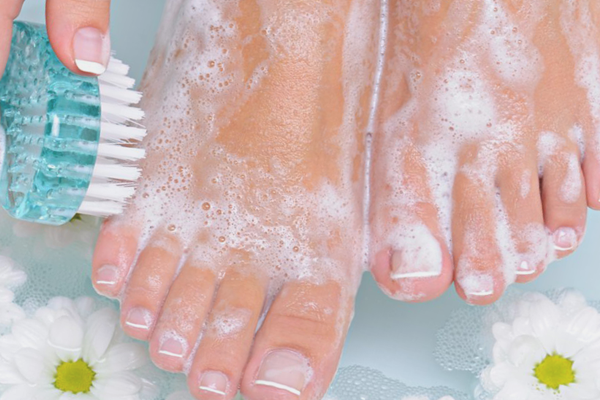

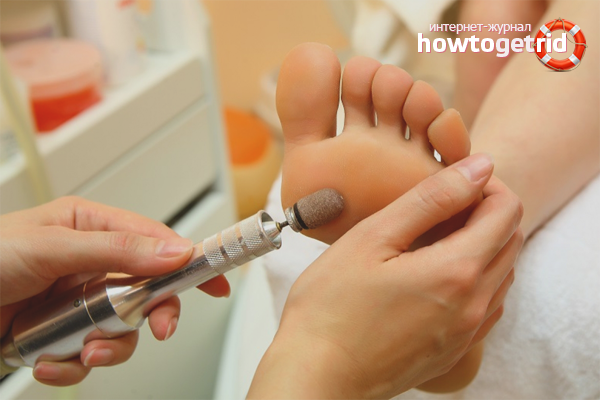

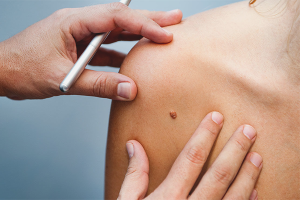
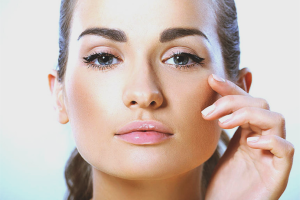
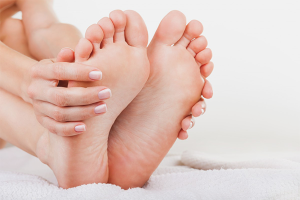
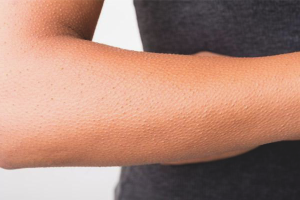
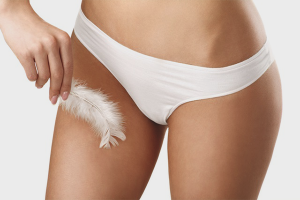
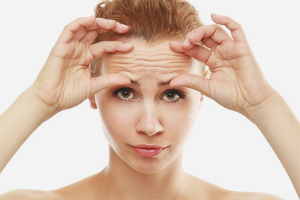
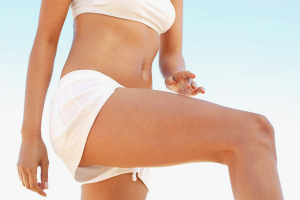
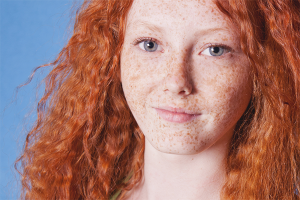
To send